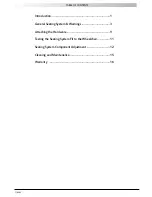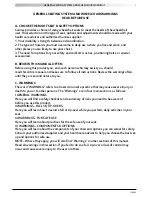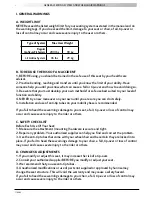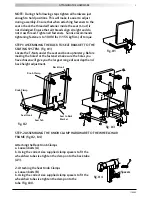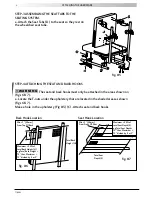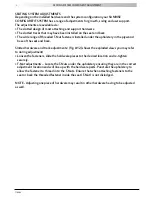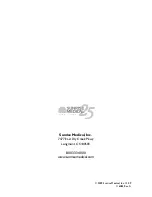
5
116083
GENERAL SEATING SYSTEM AND WHEELCHAIR WARNINGS
E. ENVIRONMENTAL CONDITIONS
1. Contact with water or excess moisture may cause your seat to rust, degrade or
corrode. This could cause your seat to fail.
a. Do not use your seat in a shower, pool or other body of water.
b. Avoid excess moisture.
c. Dry your seat as soon as you can if it gets wet, or if you use water to clean it.
If you fail to heed these warnings damage to your chair, a fall, tip-over or loss of control may
occur and cause severe injury to the rider or others.
F. WHEN YOU NEED HELP
For The User:
Make sure that each person who helps you reads and follows all warnings and
instructions that apply.
For Attendants:
1. Work with the users doctor, nurse or therapist to learn safe methods best suited to
your abilities and those of the user.
2. To prevent injury to your back, use good posture and proper body mechanics. When
you lift or support the user bend your knees slightly and keep your back as upright and
straight as you can.
3. Remind the user to lean back when you tilt the chair backward.
If you fail to heed these warnings damage to your chair, a fall, tip-over or loss of control may
occur and cause severe injury to the rider or others.
II. WARNINGS: FALLS & TIP-OVERS
A. CENTER OF GRAVITY
The point where your chair will tip forward, back, or to the side depends on its
center of gravity and stability. How your seat is set up, the options you select
and the changes you make may affect the risk of a fall or tip-over.
1. The Center Of Gravity Is Affected By:
a. A change in the set-up of your chair, including:
• The seat height and seat angle.
• Backrest angle.
b. A change in your body position, posture or weight distribution.
c. Riding your chair on a ramp or slope.
d. The use of a back pack or other options, and the amount of added weight.
3. To Reduce The Risk Of An Accident:
a. Consult your doctor, nurse or therapist to find out what axle and
caster position is best for you.
b. Consult your authorized supplier BEFORE you modify or adjust this seat. Be
aware that you may need to make other changes to correct the center of balance.
c. Have someone help you until you know the balance points of your chair and how
to avoid a tip-over.
d. Use anti-tip tubes.




